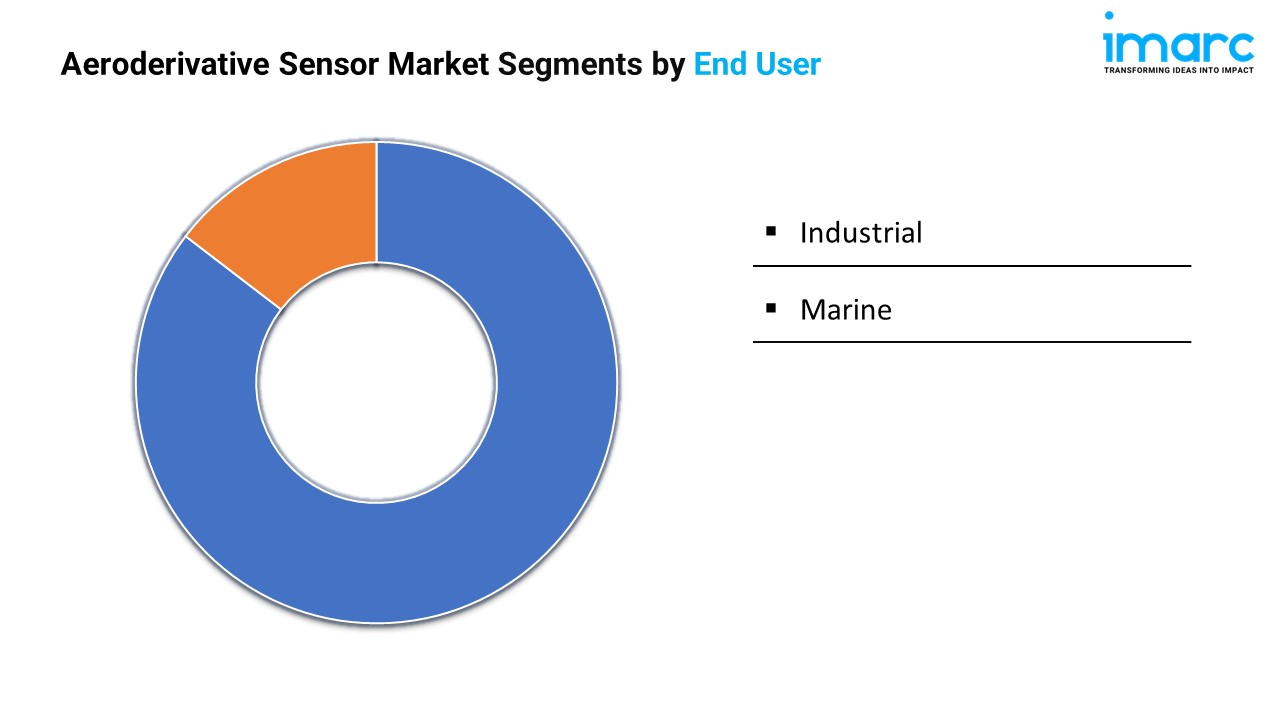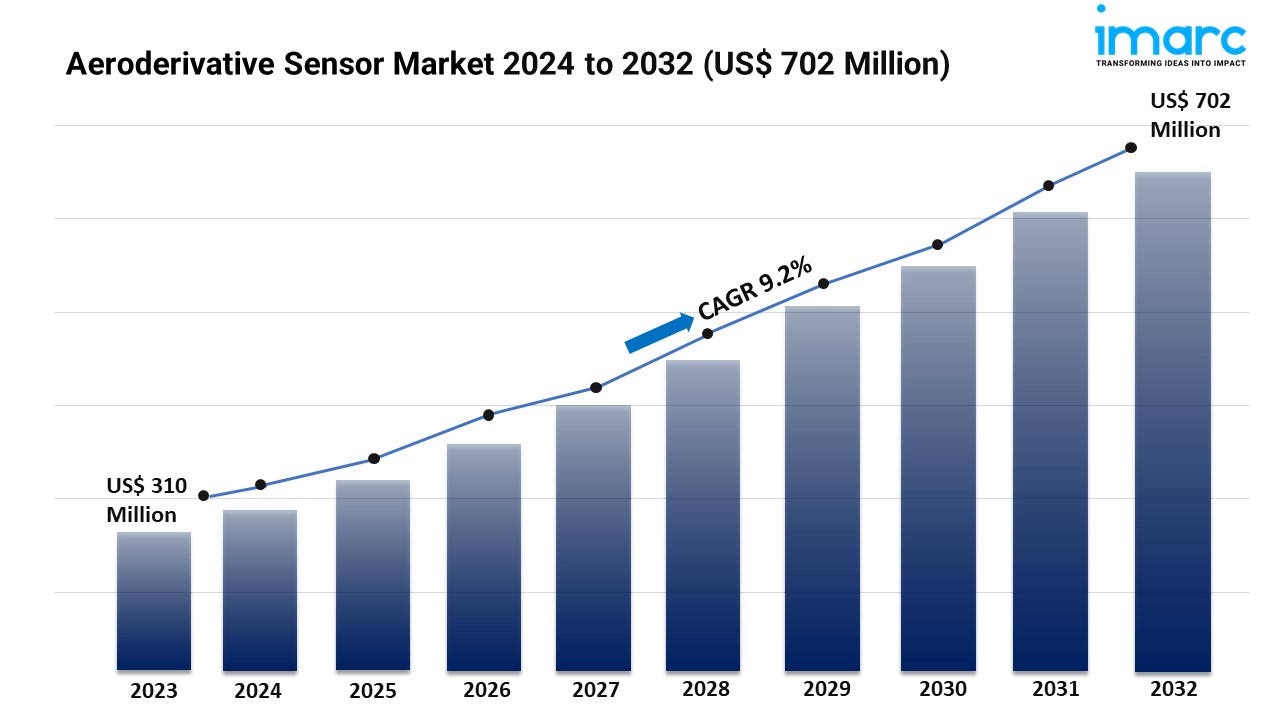Global Aeroderivative Sensor Industry: Key Statistics and Insights in 2024-2032
Summary:
- The global aeroderivative sensor market size reached USD 310 Million in 2023.
- The market is expected to reach US$ 702 Million by 2032, exhibiting a growth rate (CAGR) of 9.2% during 2024-2032.
- North America leads the market, accounting for the largest aeroderivative sensor market share.
- OEM represents the largest segment, as major industry players are investing in the development of advanced, autonomous sensors to improve reliability and expand usage.
- Industrial accounts for the majority of the market share owing to the widespread adoption of aeroderivative gas turbines in industrial applications, such as power generation, oil and gas, and chemical processing.
- Aeroderivative sensors are essential in the energy sector, particularly for gas turbines used in power generation.
- Aeroderivative turbines, originally developed for aircraft engines, are being adapted for various military and commercial applications due to their high power-to-weight ratio and rapid response capabilities.
Industry Trends and Drivers:
Factors Affecting the Growth of the Aeroderivative Sensor Industry:
- Growing Demand for Efficient and Reliable Energy Generation:
Aeroderivative sensors are essential in the energy sector, particularly for gas turbines used in power generation. These sensors provide precise monitoring and control of turbine performance, enabling higher efficiency and reliability. The rising demand for cleaner and more efficient energy sources is encouraging utilities and power producers to turn to aeroderivative turbines, which offer rapid startup times and flexibility to accommodate variable energy loads. This shift is driven by the need to balance renewable energy sources like wind and solar, which can be intermittent. The accurate data provided by aeroderivative sensors helps optimize turbine operations, reduce maintenance costs, and improve overall power plant efficiency.
- Advancements in Aerospace and Defense Technologies:
Aeroderivative turbines, originally developed for aircraft engines, are being adapted for various military and commercial applications due to their high power-to-weight ratio and rapid response capabilities. Modern aircraft, both civilian and military, rely on these turbines for propulsion and auxiliary power units. Sensors used in these systems must meet stringent standards for accuracy, durability, and performance in harsh environments. Advances in sensor technology, such as the integration of smart sensors and the internet of things (IoT) capabilities, enable real-time monitoring and predictive maintenance, enhancing operational safety and efficiency.
- Rising Focus on Environmental Regulations and Sustainability:
Aeroderivative turbines are known for their lower emissions compared to traditional industrial turbines, making them more attractive in regions with stringent environmental standards. Sensors in these turbines provide critical data that helps operators comply with emission limits and optimize fuel usage, reducing the carbon footprint of power generation and industrial processes. Moreover, the growing emphasis on decarbonization and renewable energy integration is driving the need for flexible and efficient turbine technologies. Aeroderivative sensors support these goals by ensuring turbines operate within optimal parameters, thereby promoting energy efficiency and environmental compliance.
Request for a sample copy of this report: https://www.imarcgroup.com/aeroderivative-sensor-market-report/requestsample
Aeroderivative Sensor Market Report Segmentation:
Breakup By Sensor Type:
- Temperature Sensor
- Accelerometer
- Pressure Sensor
- Vibration Sensor
- Flame Sensor
- Others
Flame sensor exhibits a clear dominance in the market attributed to its critical role in ensuring the safety of personnel and equipment by monitoring the presence of flames in aeroderivative systems and triggering safety measures.
Breakup By Service Provider:
- After Market
- OEM
OEM represents the largest segment, as major industry players are investing in the development of advanced, autonomous sensors to improve reliability and expand usage.
Breakup By End User:

- Industrial
- Marine
Industrial accounts for the majority of the market share owing to the widespread adoption of aeroderivative gas turbines in industrial applications, such as power generation, oil and gas, and chemical processing.
Breakup By Region:
- North America (United States, Canada)
- Asia Pacific (China, Japan, India, South Korea, Australia, Indonesia, Others)
- Europe (Germany, France, United Kingdom, Italy, Spain, Russia, Others)
- Latin America (Brazil, Mexico, Others)
- Middle East and Africa
North America dominates the market due to the rising demand for smart manufacturing facilities and the development of improved universal aviation gas turbines
Top Aeroderivative Sensor Market Leaders:
The aeroderivative sensor market research report outlines a detailed analysis of the competitive landscape, offering in-depth profiles of major companies. Some of the key players in the market are:

- Bently Nevada (Baker Hughes)
- EthosEnergy
- Meggitt
- KISTLER INSTRUMENT CORP
- Unison
- Conax Technologies
- Auxitrol Weston
If you require any specific information that is not covered currently within the scope of the report, we will provide the same as a part of the customization.
About Us
IMARC Group is a global management consulting firm that helps the world’s most ambitious changemakers to create a lasting impact. The company provide a comprehensive suite of market entry and expansion services. IMARC offerings include thorough market assessment, feasibility studies, company incorporation assistance, factory setup support, regulatory approvals and licensing navigation, branding, marketing and sales strategies, competitive landscape and benchmarking analyses, pricing and cost research, and procurement research.
Contact US
IMARC Group
134 N 4th St. Brooklyn, NY 11249, USA
Email: sales@imarcgroup.com
Tel No:(D) +91 120 433 0800
United States: +1–631–791–1145


